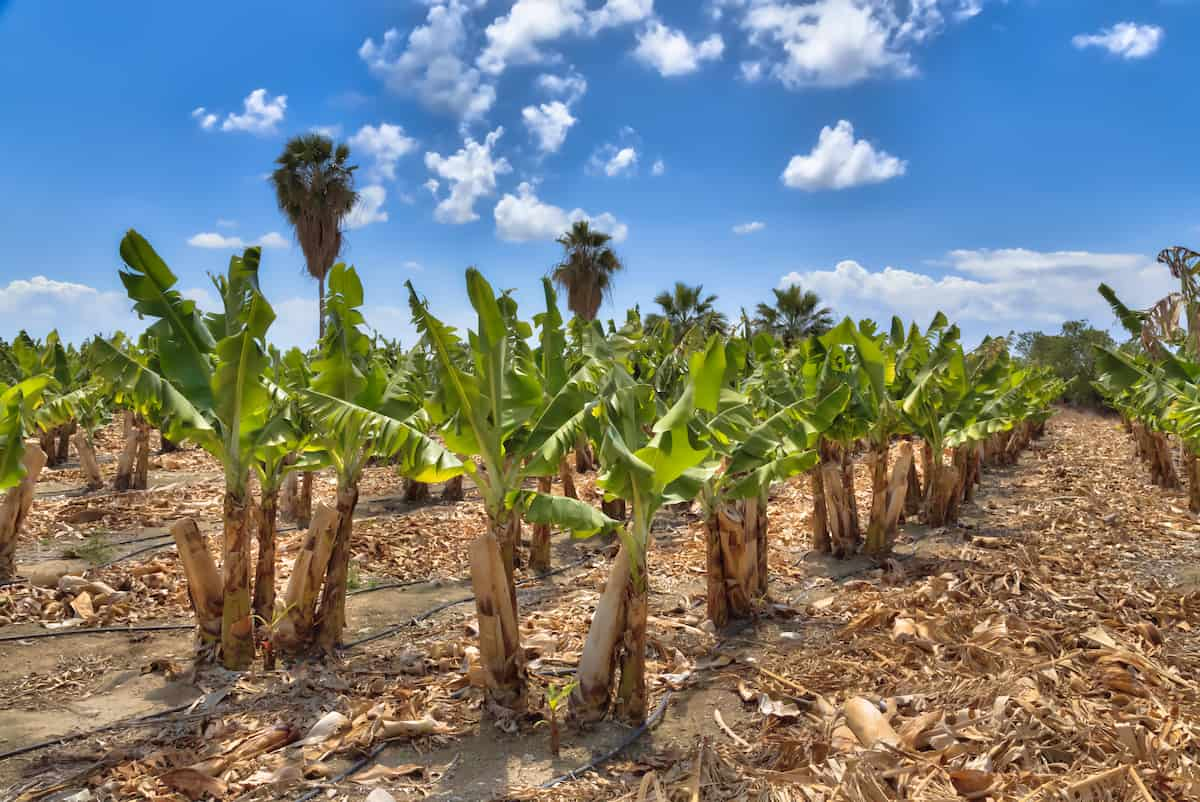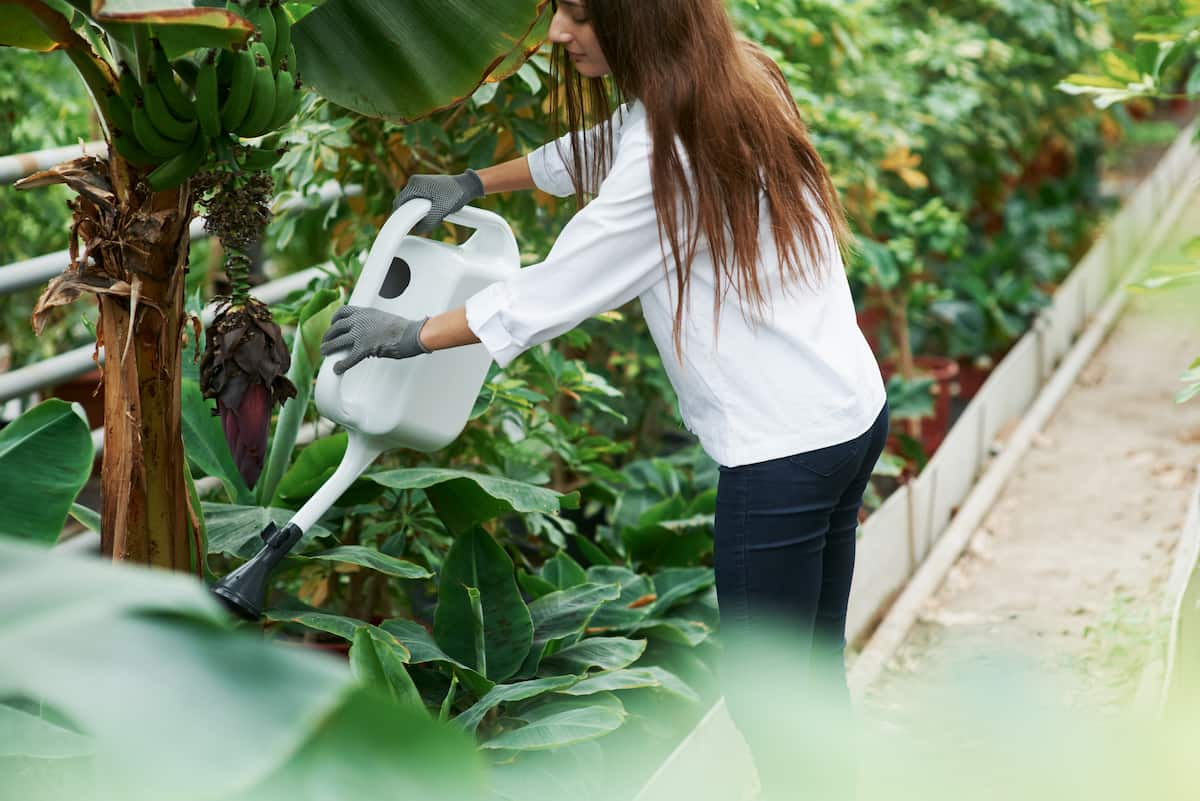The Banana Erwinia Rot Disease, caused by the bacterial pathogen Erwinia carotovora sub sp. carovora, is one of the most destructive diseases that affects banana crops worldwide. The economic impact of Banana Erwinia Rot Disease is significant, as it reduces fruit yield, quality, and marketability and can result in the complete loss of yield. The disease is known as Head Rot, Tip-Over, Bacterial Soft Rot, and Heart Rot Disease.

Effective management strategies, including disease-resistant cultivars, proper sanitation practices, and cultural control methods, are essential to control and prevent the spread of this disease in banana crops. To effectively manage this disease, it is important to understand its disease cycle, the mode of disease spread, and the best methods for controlling it. This article will provide an overview and discussion of the Banana Erwinia Rot Disease in Banana crops, including its symptoms, identification techniques, and control.
Banana Erwinia Rot Disease Management
The Causal Organism of Banana Erwinia Rot Disease
- Erwinia carotovora is a facultative anaerobe that belongs to the Family Enterobacteriaceae of Order Enterobacteriales of the Phylum Proteobacteria.
- It is a rod-shaped, gram-negative bacterium, motile by peritrichous flagella, capable of surviving in soil, water, and plant debris.
- It typically infects banana plants through wounds or natural openings, such as the flower bracts or the fruit base.
The Disease Cycle of Banana Erwinia Rot Disease
The disease cycle of the Banana Erwinia Rot Disease, Erwinia carotovora, in Banana Crops, begins with their entry through wounds, natural openings, or insect feeding sites. The bacteria can infect the plant through the flower bracts or the base of the fruit and multiply rapidly, leading to a soft, watery rot that can spread to other parts of the plant.
Once inside the plant, Erwinia carotovora produces various virulence factors contributing to its pathogenicity. These factors include extracellular polysaccharides, which allow the bacterium to adhere to the plant surface, and exoenzymes, which break down the plant cell walls and facilitate bacterial invasion. The bacterium also produces toxins that contribute to the breakdown of plant tissues and the development of the characteristic soft rot.
Once a banana plant is infected, it is difficult to control the disease, and infected plants must be removed and destroyed to prevent further spread. The disease can be transmitted through contaminated soil, tools, equipment, and infected planting materials. Erwinia carotovora can overwinter in plant debris and soil, allowing it to persist and cause new infections in subsequent growing seasons.
Occurrence of Banana Erwinia Rot Disease in Banana Crop
- Location of Banana Erwinia Rot disease: This disease occurs in Banana crops in India, Africa, China, Bangladesh, Sri Lanka, Vietnam, Thailand, Indonesia, Malaysia, the Philippines, the United States, Mexico, Brazil, Colombia, Ecuador, Peru, and Australia.
- Host range: The most common crops affected by Erwinia carotovora are Banana, Potato, Tomato, Carrot, Cabbage, Onion, and Pepper.
Favorable Conditions for Banana Erwinia Rot Disease Spread in the Field
- The disease can develop rapidly in warm temperatures and high humidity, promoting bacterial growth and spread.
- The optimal temperature range for Erwinia carotovora growth is 25-30°C, and a pH range of 6-8 is ideal.
- Plants are more susceptible when they have wounds, which provide entry points for the bacterium.
- Excess moisture in the soil can create a wet environment that promotes bacterial growth and spread, especially in poorly drained soils.
- Plants stressed due to poor nutrition, drought, or pest infestation are more susceptible to the pathogen.
- Crowded plantings can limit air circulation, increasing humidity levels and promoting bacterial growth.
Damage Symptoms of Banana Erwinia Rot Disease
- This disease is characterized by soft, watery rot that affects banana plants’ fruits, pseudostems, and roots.
- The characteristic symptom is the rotting of the collar region followed by epinasty and sudden wilting of leaves.
- Young suckers are more susceptible, exhibit rotting symptoms, and emit a foul odor.
- Pseudostems split and easily comes off, leaving the corm portion and roots inside the soil.
- A bacterial ooze from pseudostem and corm can be seen when the affected plants are cut at the collar region.
In case you missed it: Banana Bract Mosaic Disease Management: Symptoms, Treatment, Chemical, Biological, and Organic Control

Percentage of Yield Loss Due to Banana Erwinia Rot Disease in Banana Crop
- The disease can cause 10-20% yield losses in the United States. In Mexico, yield losses are 10-20%. In India, the yield losses are 30-100%. In Bangladesh, the losses are 20-70%. In Sri Lanka, the losses are 20-50%. In China, a 20-50% yield loss is seen. In Africa, yield losses are up to 10-70%.
- In Indonesia, it is 20-50%. In Vietnam, it is 30-50%. In Ecuador, it is 20-50%. In Peru, it is 20-50%. In the Philippines, it is 30-50%. In Malaysia, it is 30-50%. In Colombia, it is 20-50%. In Thailand, it is 20-50%. In Brazil, it is 20-50%. In Australia, the losses are 5-10%. The Economic Threshold Level is determined at 5-10% affected crop.
Cultural Control Measures of Banana Erwinia Rot Disease
- Avoid planting bananas in the same area for over two consecutive years. Instead, rotate with non-host crops, such as legumes, vegetables, or grasses.
- Maintain proper soil fertility levels and pH, and avoid over-fertilization, which can create favorable conditions for disease development.
- Provide good drainage facilities in the soil and avoid waterlogging in the field. Irrigation should be timed to minimize how long plant surfaces are wet.
- The field should be kept clean by removing and burning all infected leaves, suckers, and residues after crop harvesting.
- Prevent or reduce mechanical and pruning injuries to the banana plants.
- Disinfect tools and equipment and avoid soil movement from infested to disease-free fields.
Biological Control Measures of Banana Erwinia Rot Disease
- Predatory insects, such as lady beetles, lacewings, and predatory mites, can feed on other insects that may act as pathogen vectors.
- Trichoderma harzianum are beneficial fungi that colonize the roots and soil, produce antibiotics that inhibit its growth, and induce plant defenses against it.
- Bacillus subtilis and Pseudomonas fluorescens are beneficial bacteria that colonize the banana plant’s roots and produce antibiotics that suppress the growth and activity of the pathogen.
- Biological control agents, such as phages and bacteriophages, have been developed to target and kill the pathogen.
Chemical Control Measures of Banana Erwinia Rot Disease
- Spray Streptomycin and Oxytetracycline to control the bacterial spread.
- Drench the soil with Methoxy ethyl mercuric chloride, Sodium Hypochlorite, or Bleaching powder to control the disease.
- Dip the suckers in Copper Oxychloride and Streptocycline before planting in the field.
Organic Control Measures of Banana Erwinia Rot Disease
- Bio-fumigation involves growing and incorporating Brassica crops, such as mustard or broccoli, into the soil to release volatile compounds with fungicidal and bactericidal properties.
- Copper-based fungicides, such as copper sulfate, copper oxychloride, and copper hydroxide, can be used as a preventive or curative measure after disease onset.
- Chitosan produces antibacterial compounds that can control the pathogen.
- Plant extracts from neem, ginger, garlic, and turmeric leaves, such as powders, oils, and cakes, are used as a preventive measure to control the disease.
- Essential oils like tea tree, thyme, oregano, clove, and cinnamon can also control the disease.
Preventive Measures for Control of Banana Erwinia Rot Disease
- Planting rhizomes with dead central and active peripheral buds prevents disease incidence. Use disease-free, healthy, and certified planting material only.
- Always use sterilized and disinfected pruning equipment to prevent the spread of the disease to new trees.
- Regularly monitoring the crops for signs of disease will help to find and manage the disease early before it spreads.
- Proper irrigation management, such as drip irrigation and avoiding waterlogging, can help reduce the risk of this pathogen in banana crops.
In case you missed it: Banana Lacewing Bug Pest Management: Symptoms, Treatment, Chemical, Biological, and Organic Control

Conclusion
The Banana Erwinia Rot Disease caused by Erwinia carotovora is a significant threat to banana production globally. It can lead to substantial yield losses and impact the economic well-being of banana farmers. Effective disease management requires an integrated approach combining various control measures, including cultural, biological, chemical, and preventive measures. Implementing these measures can help reduce the incidence and severity of the disease, minimize economic losses, and ensure the sustainable production of high-quality banana crops.
- Deworming Schedule for Dogs/Puppies: A Beginners Guide
- How to Prevent and Control Parasites in Goats
- Beneficial Insects in Pest Management
- Natural Solutions for Pest Control in Flower Gardens
- Types of Fungicides Used in Agriculture
- Common Issues in the Fruit Development Stage of Pomegranate Farming
- Fruit Development Issues in Papaya: Easy Solutions and Treatment
- Soil-Borne Diseases and How to Protect Your Plants
- Practices to Prevent Disease Spread in the Garden